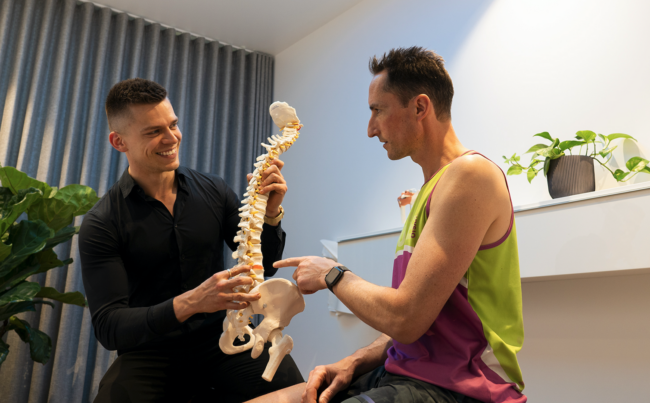Referred Pain, What Is It?
Published on
22 Feb 2024


Written by
Andrew Brady
Senior Physiotherapist
Call us on: (03) 9975 4133
Most people scratch their head when we talk about referred pain and ask “what is that?” Referred pain is the phenomena where pain is perceived to be in one area when the painful stimulus [or injury] is actually somewhere else.
Most people scratch their head when we talk about referred pain and ask “what is that?” Referred pain is the phenomena where pain is perceived to be in one area when the painful stimulus [or injury] is actually somewhere else. The most commonly known referred pain is to do with the heart. When someone is having a cardiac event, it is not unusual to hear them describe pain into the left side of their neck, through the left shoulder and down the left arm. But this is not the only common example. When people are describing a sciatic pain down the leg, this too is often a referred pain coming from the lower back.
Why does it happen?
The most commonly accepted theory is that referred pain is caused by a convergence of nerves at the spinal cord, as well as the same spinal segment. When both nerves have an input into the same spinal level, the brain can get confused and will believe the pain is coming from the sensory nerves [normally a higher amount of input at the level of skin] rather than deeper structures like organs. Due to the segmental nature of the spine, medical professionals can often map out the area of pain and locate the problem once pain has been determined to be referred.
Why is this relevant to physio?
Referred pain is not just caused by organs. Other common causes can be sciatic pain down the leg, caused by an impingement of the nerves in the lumbar spine, or some headaches can be caused by a compromise of the trigeminal nerve in the neck. Other less well known referral patterns can include vastus lateralis [your outside quad] referring pain down into the knee, or infraspinatus [part of the rotator cuff and the back of the shoulder blade] referring pain down the bicep and to the front of the shoulder.
Often times, we can refer to points that are known to cause pain referral patterns as trigger points or knots in our muscles. These points can be indicative of a muscle not functioning at its peak, whether it’s due to inactivity, overload, incorrect loading or damage to structures.
So what do I do about it?
Your physiotherapist will be able to assess the nature of your pain and let you know if there is an element of referred pain to your condition. They can then assist with treatment, with options including:
- Dry needling
- Massage and mobilisation
- Strengthening exercises
- Movements to help desensitise the nerves and body
- Referral for further investigation if needed
If you think you may be suffering from some referred pain then contact your physio today and they can perform a thorough assessment to help you deal with the cause of your symptoms.
About the Author
Andrew Brady — Senior Physiotherapist
Andrew's aim is to decrease his clients pain through hands-on therapies including tissue manipulation and dry needling. He has worked with a large range of clients included national level athletes in powerlifting, weightlifting and rowing as well as combat sports.


